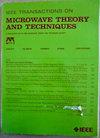Multiobjective Distributed Beamforming Using High-Accuracy Synchronization and Localization
IF 4.1
1区 工程技术
Q2 ENGINEERING, ELECTRICAL & ELECTRONIC
IEEE Transactions on Microwave Theory and Techniques
Pub Date : 2024-12-13
DOI:10.1109/TMTT.2024.3479074
引用次数: 0
Abstract
We present a multinode, multiobjective open-loop microwave distributed beamforming system based on high-accuracy wireless synchronization and localization. Distributed beamforming requires accurate coordination of the spatial and electrical states of the individual elements within the array to achieve and maintain coherent beamforming at intended destinations. Of the basic coordination aspects, time synchronization and localization of the elements are among the most critical to support beamforming of modulated waveforms to destinations in both the near-field and far-field relative to the array. In this work, we demonstrate multiobjective distributed beamforming from a three-node software-defined radio distributed phased array system that leverages high-accuracy wireless time coordination for both time synchronization and 2-D localization of the elements. We use a spectrally sparse two-tone waveform for high-accuracy internode range estimation combined with a linear frequency-modulated waveform to mitigate multipath interference. Localization is performed in a centralized format, where one node is designated as the origin and the remaining nodes build the array geometry relative to the origin, from which we obtain localization accuracy of less than 1 cm. We implement a near-field multiobjective beamformer based on the location estimates, which enables simultaneous steering of a beam and a null to two receiving antennas. Multiobjective beamforming of pulsed waveforms at a carrier frequency of 2.1GHz is demonstrated in cases where one of the nodes in the distributed antenna array is moved, and where the targets (the two receiving antennas) are moved, demonstrating multiobjective with steerable beamforming and displacement of the array elements.求助全文
约1分钟内获得全文
求助全文
来源期刊

IEEE Transactions on Microwave Theory and Techniques
工程技术-工程:电子与电气
CiteScore
8.60
自引率
18.60%
发文量
486
审稿时长
6 months
期刊介绍:
The IEEE Transactions on Microwave Theory and Techniques focuses on that part of engineering and theory associated with microwave/millimeter-wave components, devices, circuits, and systems involving the generation, modulation, demodulation, control, transmission, and detection of microwave signals. This includes scientific, technical, and industrial, activities. Microwave theory and techniques relates to electromagnetic waves usually in the frequency region between a few MHz and a THz; other spectral regions and wave types are included within the scope of the Society whenever basic microwave theory and techniques can yield useful results. Generally, this occurs in the theory of wave propagation in structures with dimensions comparable to a wavelength, and in the related techniques for analysis and design.
 求助内容:
求助内容: 应助结果提醒方式:
应助结果提醒方式:


